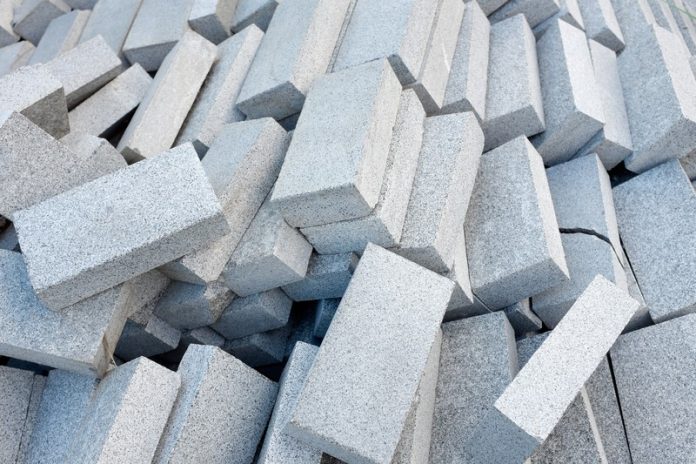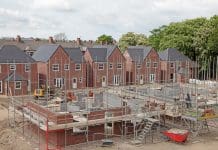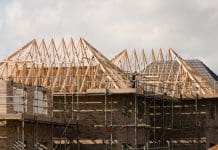Premier Guarantee Technical Standards Manager, John Gilbert, highlights the measures you can take to account for movement of concrete bricks in your projects
A huff and a puff may not have been able to move the house made of bricks, but unfortunately in the real world there may be more movement in your brick-built properties than you may think.
All building materials move in one way or another, either from drying shrinkage, moisture movement (absorption and drying out), thermal effects or structural movement. Concrete bricks are not unique in this respect.
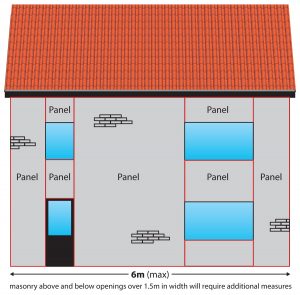 Types of Movement of Concrete Bricks
Types of Movement of Concrete Bricks
Movement in a structure can arise from the effects of:
• Thermal influences.
• Shrinkage and moisture movement characteristics of the external masonry.
• Changes in the orientation or shape of a building.
• Site practice.
• Type and grade of mortar.
• Incorrect storage and protection of materials.
The tendency for all concrete products is to shrink slightly over time and when drying out, although they may revert back to near their original size when subject to moisture. Like all materials, they are also subject to thermal movement. Consequently, the location of movement joints is to define the most appropriate position to accommodate this movement of concrete bricks while considering the aesthetic, practical and structural factors.
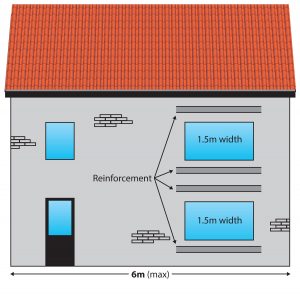 Shrinkage
Shrinkage
Concrete shrinkage is due primarily to the shrinkage of the hardened cement paste. The type and amount of aggregate can affect the amount of shrinkage in a concrete bricks performance.
Sandstone Aggregate: Typical one-year shrinkage @ 0.116%.
Granite Aggregate: Typical one-year shrinkage @ 0.047%.
Limestone Aggregate: Typical one-year shrinkage @ 0.032%.
With the high differential of movement between the various available raw materials used in concrete brick manufacture, it is imperative that the design for movement in a wall panel is specific to the shrinkage capacity of the concrete brick used and the requirements of the manufacturer should be followed. In all cases, site-specific advice should be obtained from the manufacturer before work begins.
Materials
Concrete bricks must display a CE marking. The use of non-CE concrete bricks must be referred back to the technical services team for consideration.
Concrete bricks must be adequately cured before delivery to site. Excess moisture introduced into the brick will result in a higher shrinkage rate. Bricks must be kept dry while storing on-site and stacking out. Bricks should not be wetted before laying and incomplete brickwork should be protected from the rain and snow as this will minimise the risk of shrinkage and efflorescence leaching from around the mortar joints.
Thermal movement
South-facing walls, particularly those built of dark coloured bricks, are more susceptible to thermal movement than other elevations. Whereas a simple contraction joint may suffice in more sheltered elevations, joints for southern-facing elevations should have movement joints that are capable of responding to both expansion and contraction.
Mortar
The mortar should be suitable for use and the specific strength of the mortar used on-site should be accounted for in the design. Stronger mortars have higher shrinkage values and care should be taken to ensure the correct grade of mortar is specified and used. An M4 mortar is generally most appropriate; however, due to safety factors incorporated by mortar suppliers, the onsite M4 mix has the potential to have an increased strength. The mortar manufacturer’s supply documents must verify that the mortar is an M4 quality (or whichever is required for the specific situation) and ensure the mortar mix is not a stronger mix due to safety factors.
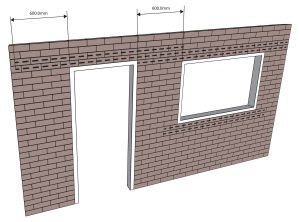 Dissimilar materials
Dissimilar materials
In certain instances, different masonry materials may be combined within the same elevations. In the case of clay bricks, which have expansive properties, and concrete bricks, which may shrink slightly, it is important to make provision for this differential movement.
Where, for example, a clay brick is used up to DPC level and a concrete brick built as the superstructure then the DPC itself may act as a slip plane and allow the differential movement to occur. This can be dependent on the dead load on the DPC and a structural engineer’s advice should be sought. In all cases, provision should be made to ensure structural stability.
If two dissimilar materials are mixed on one elevation then slip planes should be introduced or bed joint reinforcement incorporated to dissipate the areas of tensile stress. Again, a structural engineer’s advice should be sought and provision must be made to ensure that structural stability is not compromised.
Position of movement joints
External wall leafs of concrete brickwork should be designed as a series of panels separated by movement joints to control contraction. The degree of movement is dependent upon unit type and, as a rule, vertical joints to accommodate horizontal movement should be provided at intervals of 6m. The ratio of length to height of the panels should generally not exceed 3:1 (BS 5628).
The superstructure should be viewed as a series of panels (Figure 1). For example, in elevations where window openings are wide in comparison to their height, leaving long low areas of masonry such as Fig 1 panel 1 and 2, or where those types of openings are stacked above each other, this may result in the brick panels in between the windows being less than 6m metres but exceeding the 3:1 ratio. In these instances, inclusion of vertical joints in line with the jambs may need to be considered, or alternatively bed joint reinforcement introduced to dissipate the stresses within the panel (Figure 2).
Particular care should be taken with openings greater than 1.5m in width, especially where they are placed directly above each other. In this case, the panel may not exceed 6m or the 3:1 ratio but can be subject to stresses from the larger areas of brickwork adjacent to the openings. In these cases, bed joint reinforcing should be introduced above and below the openings (Fig 2 and 3). The bed joint reinforcement should generally extend 600mm past the openings and must not extend through any movement joint. Care must be taken to ensure the bed reinforcement is installed in the correct brick courses as per the brick manufacturer’s recommendations. The reinforcement should be of the ladder/lattice type as opposed to the expanded mesh version.
While this bed joint reinforcement will assist in the prevention of potential cracking, it is not a complete alternative to movement joints and these should still be provided at the appropriate locations.
https://www.premierguarantee.co.uk/blog/technical-advice/accounting-for-movement-in-concrete-bricks/
John Gilbert
Technical Standards Manager
Premier Guarantee
Tel: +44 (0)8444 120 888
Twitter: @PG_Live
Please note this article is a commercial profile


